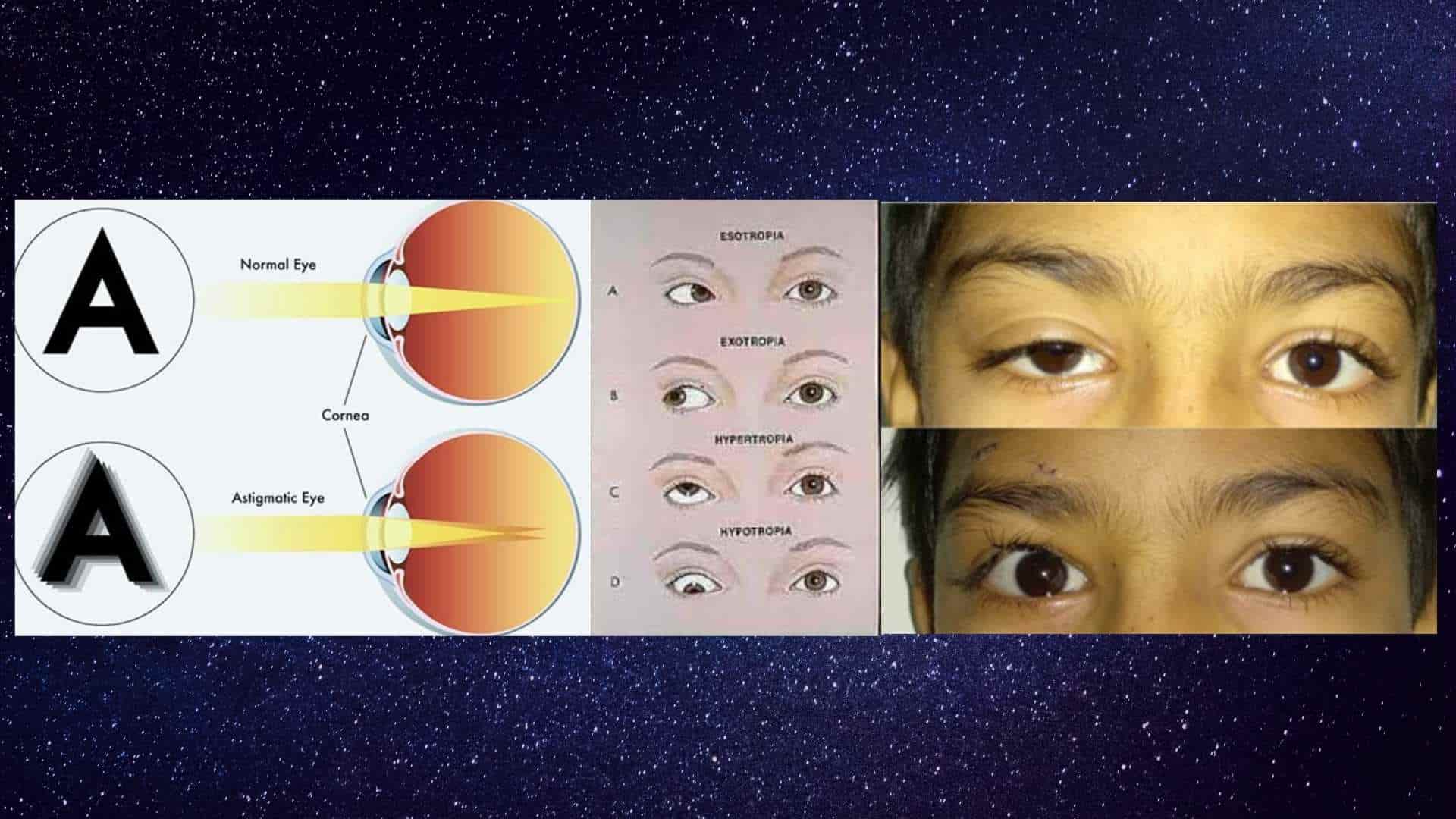Amblyopia, or lazy eye syndrome, takes its name from the Greek word which means “obtuse eye”. It is characterized by a difference in acuity between the two eyes.
According to some research, amblyopia or lazy eye affects approximately 7 to 8 of 1000 school-aged children, a disorder that normally affects only one of the eyes and that consists of a decrease in visual acuity, so that the image that reaches the brain from that eye is blurred.
“The main characteristic of this disease is that one eye works less than the other due to a lack of visual stimulation”, explains Animesh Rai from JLR Eye Hospital.
Normally, if you look at the eye under a microscope in most cases you don’t see any organic defects. The functionality simply does not develop correctly and stops halfway, that is why there is no surgical technique that allows the doctors to solve it.
Table of Contents
HOW IS AMBLYOPIA DETECTED?
The characteristic clinical sign of amblyopia is that the child does not see well with one of the two eyes.
When your brain receives the two images (one good and one bad) it just sticks with the good one. That is why the little ones do not realize that they have a vision problem.
Even after 6 or 7 years of age, children are not able to detect it because they are not observed. To notice it they would have to cover one eye, look at some object, and then cover the other eye and check if they see the same.
WHAT CAUSES “LAZY EYE”?
The two most common causes of amblyopia are poor correction of a vision defect (when the eyes have different prescriptions) and strabismus.
In this case, as is usually very evident, the parents realize the deviation of the eye and go to the ophthalmologist. The treatment is often associated with wearing corrective lenses prescribed by the ophthalmologist.
Since it has not been proven that eye-related disorders are genetic but it has been mostly observed that families that suffer such problems have a tendency to give birth to diseases like myopia, hypermetropia, etc.
In respect to the chances of inheriting this visual disease from the parents, he clarifies: “in certain families which hold a history of problems related to ophthalmological, graduation disorders or ocular deviations, I would recommend parents to take the child to the ophthalmologist at the latest at 3 -4 years.”
THE IMPORTANCE OF REVIEWS
The visual acuity of the child develops between 0 and 4 years. Usually, at the 4-year check-up, the pediatrician performs a visual acuity test.
“It is a good age both for the level of vision development and for the child’s ability to collaborate when doing the test ”, explains Animesh Rai. If the pediatrician detects something abnormal, he refers you to the ophthalmologist.
The recovery of visual function is quite possible, it depends on the depth of the amblyopia, the age of the child, and the involvement of the family. This visual failure can lead to total loss of vision in that eye.
The orthoptist will measure the progress during regular check-ups and will adapt the current treatment which can take several forms: occlusion, Ryser filter (filter on glasses), optical penalties (glass stronger on one side), or various exercises.
It is necessary that the screening be done in time to ensure complete restoration of the function of the eye affected by amblyopia because the little plasticity that remains at the young age generally disappears after this age.
HOW IS LAZY EYE TREATED?
If even after putting on the glasses they continue to see poorly, it means that there is an amblyopia problem. For the cases like this, the best option would be to cover the unaffected eye with a patch.
Depending on the amount of amblyopia, it is usually recommended that the patient should wear the patch for 2, 4, or 6 hours.
Another treatment that is not used as much in the common environment but that is widely used in Anglo-Saxon countries is the application of a few drops (atropine) in the good eye that make it seem more blurred than the other. In this way, you force the child to “look” with a lazy eye.
This treatment cannot be applied to all children, it depends on the type of amblyopia and the graduation they have.
The effectiveness of the drops and the patch are very similar, perhaps slightly in favor of the patch, but good results can also be obtained with the drops.
The treatment is to improve vision in the affected eye and to provide stereopsis, or “three-dimensional” vision and depth perception. Treatment can last for several months to ensure that the affected eye gains the best possible vision. In addition, sports participation and future employment can be affected by poor vision in one eye or loss of three-dimensional vision.
Ophthalmologists are researching to find the best method to treat amblyopia. “A number of experiments and studies are currently underway to analyze the best solution for the restoration of visual power. ”
At the moment the results are very heterogeneous and there is still no scientific evidence that shows us that this may be an alternative treatment. Some children that visit us, do it in a complementary way, at the initiative of the parents.
IS IT ASSOCIATED WITH OTHER VISUAL PROBLEMS?
The fact of having amblyopia does not usually give any other added vision problem in adulthood.
People who have had amblyopia may see better with one eye than with the other when older. But since the brain uses the best quality image, there is usually no problem.
On certain occasions, amblyopia causes problems when it comes to seeing in three dimensions: “if a person with amblyopia problems has three-dimensional vision affected, they may have more difficulties in very specific situations. For example, to play sports like tennis, where you have to focus on a small ball moving at high speed.”
Visit for more articles




